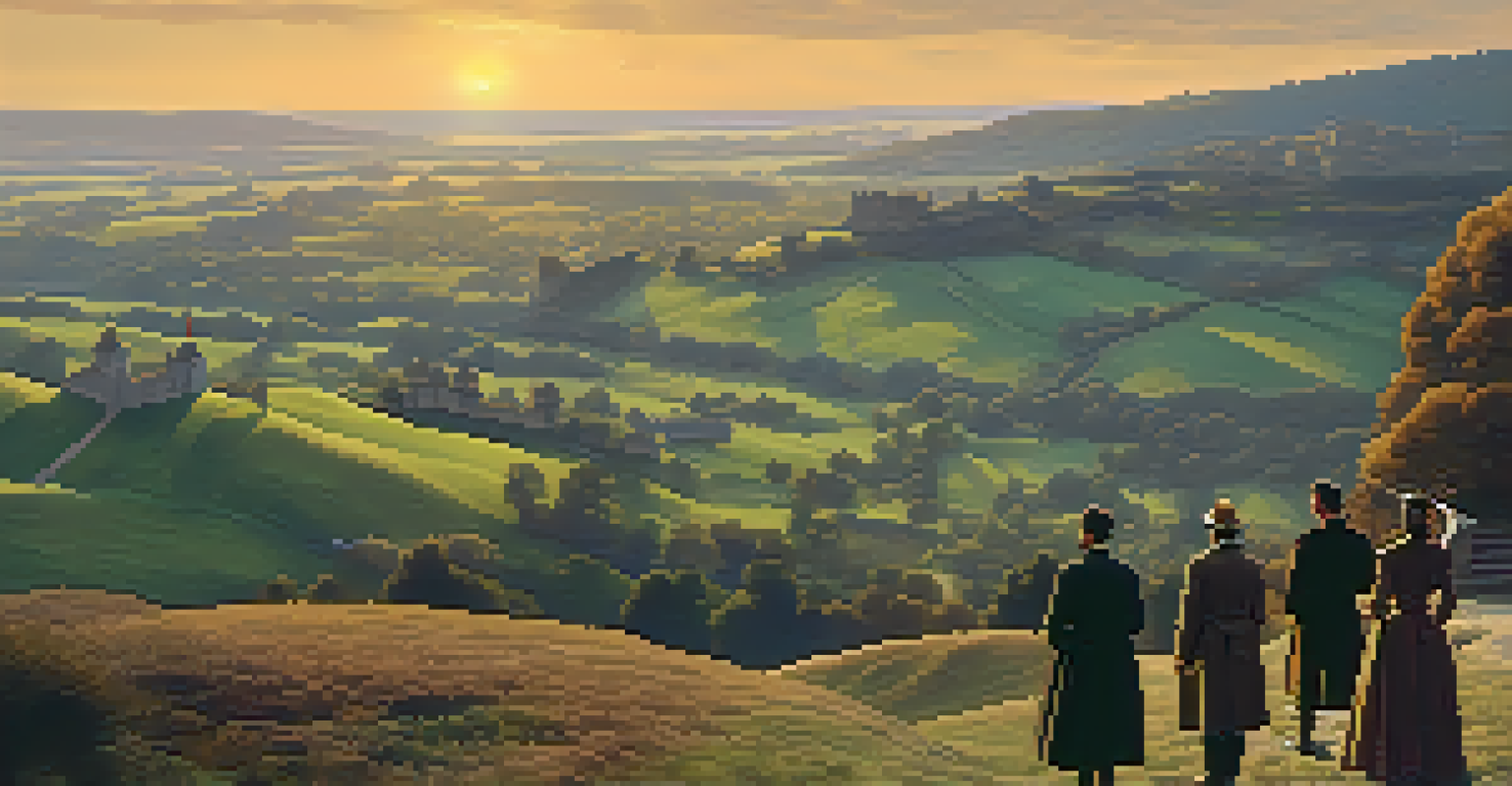Crossing Mediums: The Challenges of Literary Adaptations

Understanding Literary Adaptations and Their Appeal
Literary adaptations have captivated audiences for generations, bridging the gap between books and visual storytelling. They allow readers to see their favorite characters and worlds brought to life in vivid detail. This transformation from page to screen can create a shared cultural experience, inviting those who may not typically read to engage with the source material.
Books are a uniquely portable magic.
However, the allure of adaptations is not just about visual spectacle; it's also about the emotional connections we form with stories. When a beloved novel is adapted, fans hope to see the essence of the original captured on screen. This anticipation can lead to high expectations, which often pave the way for criticism, especially if key elements are altered or omitted.
Ultimately, the appeal of literary adaptations lies in their ability to spark conversations about the original work, its themes, and its characters. They can breathe new life into classic narratives, making them accessible to new audiences while also inviting old fans to revisit the stories they love.
The Challenges of Staying True to Source Material
One of the most significant challenges in adapting literature is the need to balance fidelity to the source material with the constraints of the new medium. A novel's depth often comes from its internal monologues and intricate details that are challenging to translate visually. This can lead to difficult decisions about which parts of the story to retain, alter, or even eliminate altogether.

For instance, consider the adaptation of 'The Great Gatsby.' While the film captured the lush visuals of the 1920s, some fans felt that the internal struggles of Gatsby, expressed through Fitzgerald's prose, were lost in the transition to film. This highlights the delicate dance between honoring the original text and creating a cinematic experience that stands on its own.
Adaptations Bridge Books and Film
Literary adaptations create a shared cultural experience, bringing beloved characters and narratives to life for both readers and non-readers.
As a result, filmmakers must navigate the expectations of both readers and general audiences, often leading to mixed reviews. This balancing act can create a tension that is both exciting and daunting, reminding us that adaptations are not just retellings but reinterpretations of beloved stories.
Character Development: A Double-Edged Sword
When adapting a novel, character development often takes center stage, but this can be a double-edged sword. In literature, characters can be explored in depth through extensive backstories and inner thoughts, which can be challenging to convey on screen. Filmmakers must find creative ways to show character growth without relying on lengthy exposition.
The best adaptations are those that understand the story's essence and translate it into a new medium without losing its heart.
Take the adaptation of 'To Kill a Mockingbird.' The film focuses on Scout and her observations, allowing viewers to connect emotionally with the characters through their actions rather than internal dialogue. This choice can effectively translate the essence of the characters, but it also risks oversimplifying their complexities.
Ultimately, the success of character development in adaptations hinges on the ability of the filmmakers to preserve the nuances of the original while making them relatable to viewers. Striking this balance is crucial, as it can make or break the audience's connection to the story.
Pacing and Structure: The Art of Condensing Stories
Adapting a lengthy novel into a two-hour film often requires significant changes to pacing and structure. Novels can afford to meander through subplots and character arcs, while films must maintain a tight narrative to keep viewers engaged. This process of condensing can lead to the exclusion of beloved scenes or characters, which can frustrate fans of the original work.
For example, the adaptation of 'Harry Potter' saw the exclusion of numerous subplots that were integral to the growth of secondary characters. While the films are entertaining, die-hard fans might feel that the richness of the story was compromised for brevity. This issue highlights the difficulty filmmakers face in creating a cohesive story within a limited timeframe.
Balancing Fidelity and Creativity
Filmmakers face the challenge of staying true to the source material while adapting it to suit the visual medium, often leading to difficult creative decisions.
Finding the right pacing and structure is essential for any adaptation, as it not only impacts the narrative flow but also influences audience engagement. A well-paced film can capture the spirit of the original while still standing as a compelling story on its own.
Visual Interpretation: The Power of Cinematic Imagery
One of the most exciting aspects of literary adaptations is the opportunity for visual interpretation. Filmmakers have the unique ability to create striking imagery that enhances the story, using cinematography, color palettes, and visual effects to convey emotions and themes. This visual storytelling can provide a new dimension to familiar narratives.
Consider the adaptation of 'The Lord of the Rings.' The breathtaking landscapes and intricate set designs brought Tolkien's world to life in ways that readers had only imagined. These visual elements not only captivated audiences but also added layers of meaning that enriched the overall experience.
However, the challenge lies in ensuring that the visuals complement the narrative rather than overshadow it. A successful adaptation strikes a balance, where the visual interpretation serves to enhance the core themes and emotions of the original story without losing sight of its essence.
Fan Expectations: The Weight of Legacy
Adapting a beloved literary work comes with a heavy burden: the expectations of fans. Readers often form deep attachments to characters and stories, and any deviation from the source material can lead to backlash. This pressure can create a tense environment for filmmakers who are tasked with interpreting cherished works.
For instance, the adaptation of 'The Perks of Being a Wallflower' faced scrutiny from fans who were deeply connected to the book's themes of adolescence and mental health. While the film received praise for its authenticity, some felt that certain aspects were glossed over. This showcases how adaptations can be a risky endeavor, with the potential for both acclaim and disappointment.
Streaming Revolutionizes Adaptations
The rise of streaming platforms has transformed literary adaptations, allowing for more ambitious and expansive storytelling opportunities.
Navigating fan expectations is a delicate balance, as filmmakers must honor the legacy of the original while also making creative choices that resonate with a broader audience. Ultimately, successful adaptations often find a way to respect the source material while inviting new interpretations.
The Evolution of Adaptations in the Digital Age
In recent years, the landscape of literary adaptations has shifted dramatically, particularly with the rise of streaming platforms. These services have opened the door for more ambitious adaptations, allowing for longer runtimes and serialized storytelling that can do justice to complex narratives. This evolution has changed the way audiences consume adaptations, leading to a renewed interest in literature.
For example, adaptations like 'The Witcher' and 'Shadow and Bone' have found success on streaming platforms, offering viewers a chance to explore expansive worlds in a way that traditional films may not allow. This trend has allowed for a deeper exploration of characters and themes, providing a more faithful representation of the source material.

As the digital age continues to evolve, so does the opportunity for literary adaptations to thrive. This shift not only benefits fans of the original works but also encourages a new generation to discover and engage with literature, creating a vibrant cycle of storytelling across mediums.